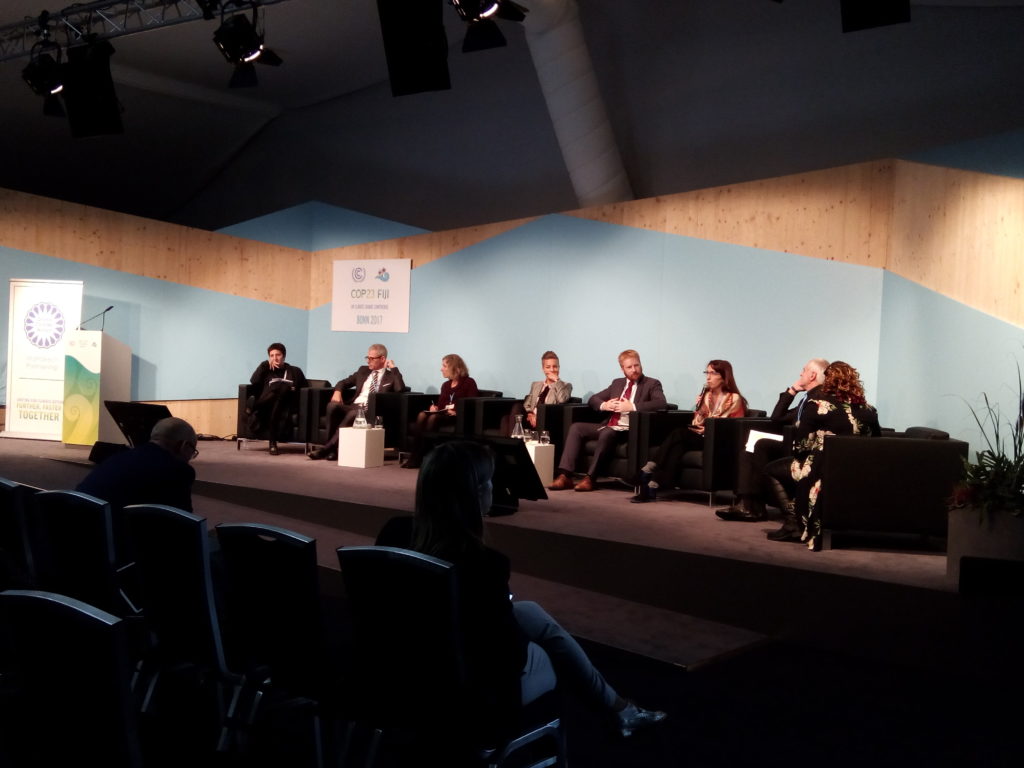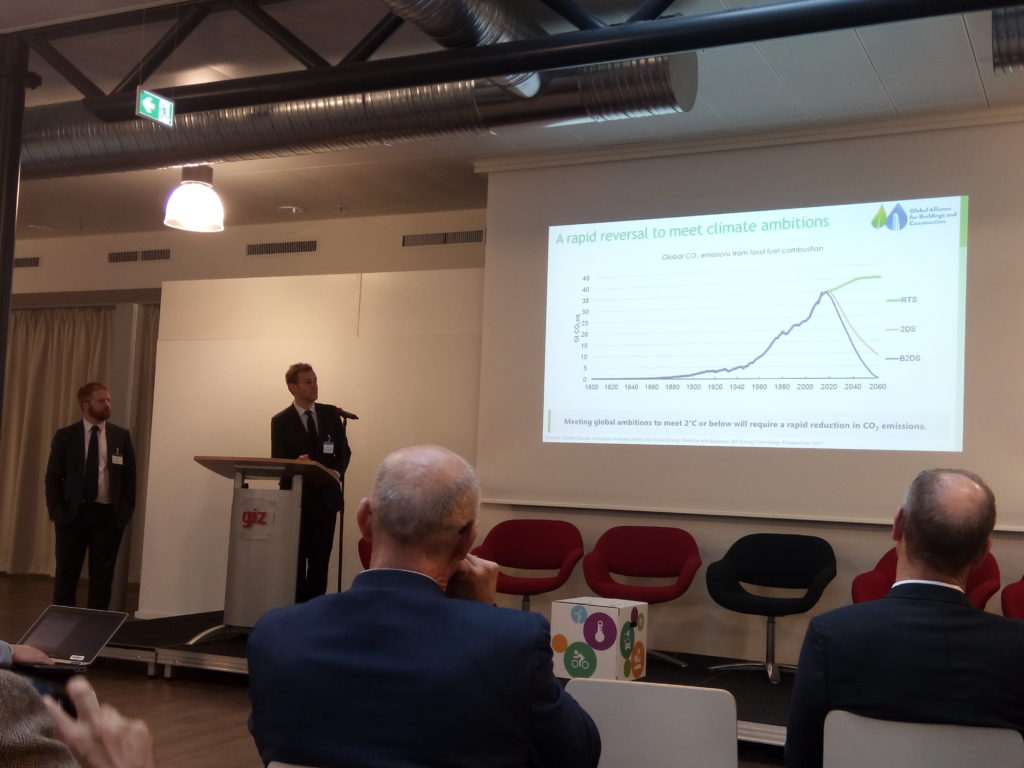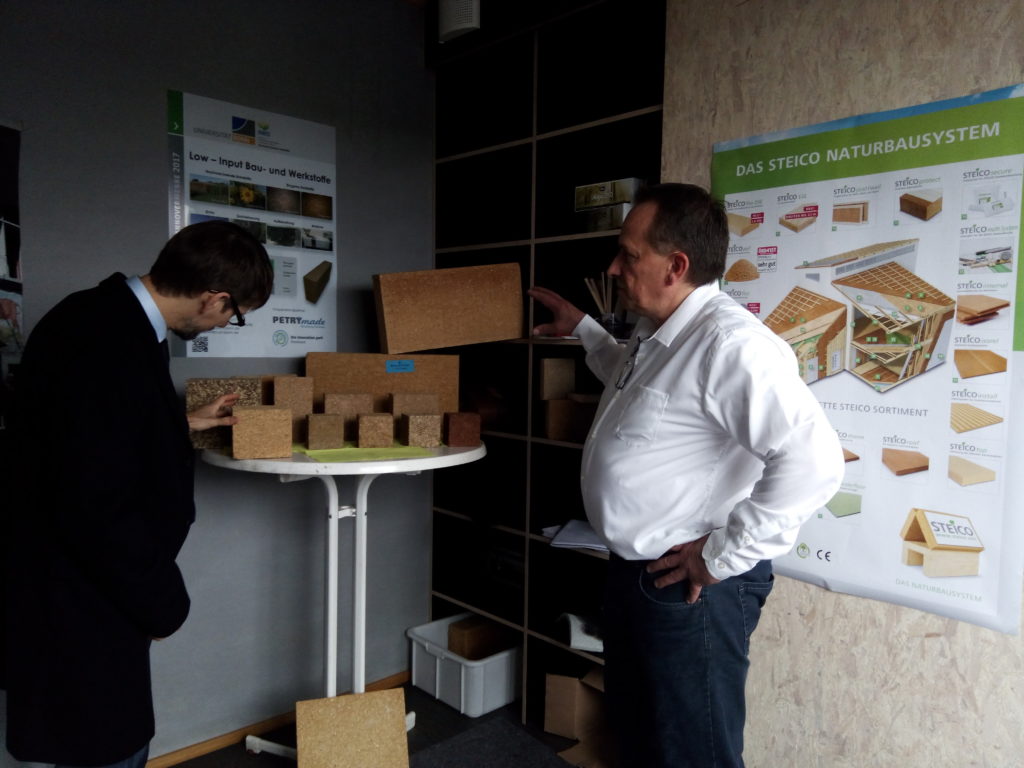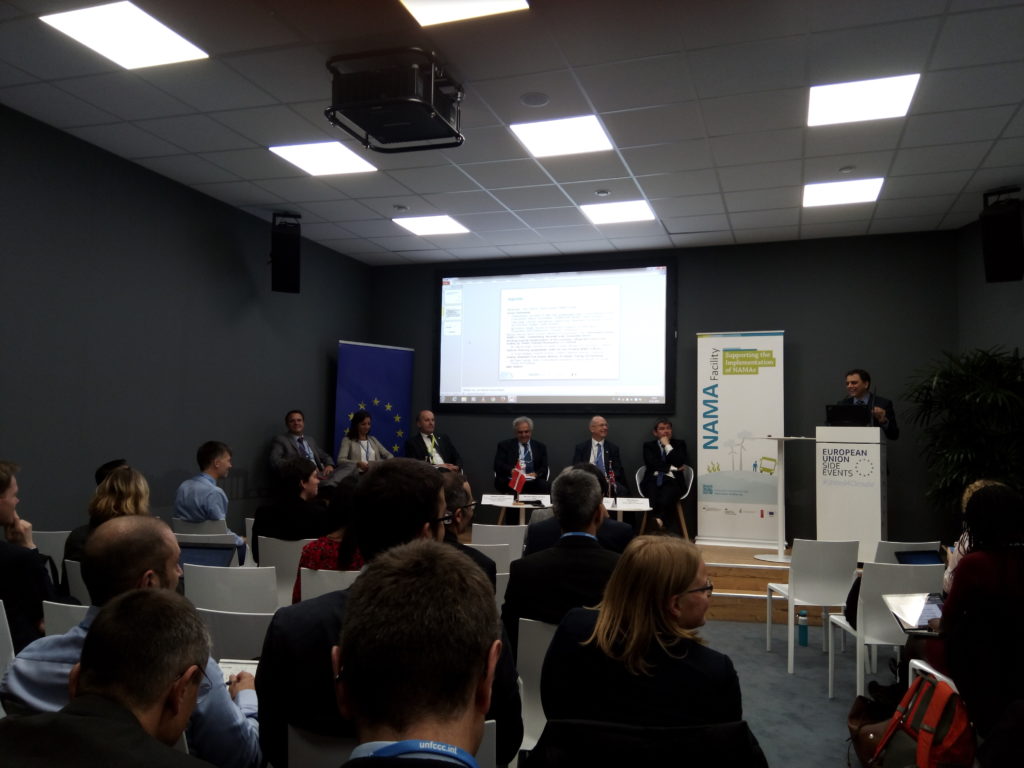Author: Camille Sifferlen
November 2017, saw the COP23 Climate Conference come to Bonn, Germany with the island nation of Fiji being the official host. Representatives from iPHA and the Passive House Institute (PHI) attended the conference to promote the Passive House Standard as a tried and tested solution for reducing greenhouse gas emissions and constructing healthier buildings. Here are some of the highlights from the conference and a look at how things are moving forward.
Energy efficiency first
As a member of the Global Alliance for Building and Construction, iPHA/PHI representatives Camille Sifferlen and Jessica Grove-Smith attended the Building Symposium Day and the roundtable discussion ‘Transforming the Buildings and Construction Sector’ during the Human Settlements day. These events aimed at compiling a list of international best practices to later issue recommendations for decision-makers regarding the building sector. It has become clear that we need to act quickly and decisively to decrease worldwide C02 emissions. Therefore, ensuring an energy efficiency first approach and highlighting the importance of a high-quality building envelope was top of the agenda during the meetings – all the renewables in the world won’t do if it goes to waste on a poor building envelope. In addition, life cycle assessment, industry engagement, implementing a holistic city approach and the challenges faced by quickly expanding cities were discussed. It was a great opportunity for PHI to clarify some common misconceptions, such as adpating the Passive House criteria for hot and humid climates or the advantages of PHPP as a static monthly calculation tool.

Developing countries
There is a huge potential for expanding cities in developing countries. They present an immense opportunity to get things right and this should not be missed. A shift to energy efficient buildings is one aspect of this opportunity, bringing with it all the solutions to issues in inefficient building stock. For example, using a minimal energy supply to avoid peak load problems, minimising CO2 emissions and improving the health and comfort of occupants.
Achieving high energy efficiency can be challenging, especially for countries where the components and the knowledge are not yet widespread. This is why PHI developed a tiered approach for Mexico. With the support of the GIZ, we created the EcoCasa study, and later developed the DEEVi software, which is currently being used by the Mexican government to evaluate the energy efficiency of their projects.
 Passive House is just the beginning
Passive House is just the beginning
It’s great to see that more and more Passive House projects go beyond the classic Passive House Standard, by generating their own renewable energy and/or using local, low embodied energy materials, therefore meeting our Plus and even Premium Class Standards. The GABC delegation visited such a building as part of the Passive House Open Days. Participants were amazed by the Student dormitory they visited, seeing how a holistic construction approach backed by simple solutions could help to drastically reduce the energy demand while enhancing occupants’ health and comfort. The relatively low investment cost (cradle to cradle approach) and the pedagogical aspect of this student residence where many technical features are deliberately still visible also attracted attention.

Green Solution Awards
Thanks to our partnership with Construction 21, we are able to share best practices from our international partners and present the diversity of Passive House buildings to a broader audience. iPHA was honoured to present the prize for best low carbon construction during the Green Solutions Awards. Several winners from Belgium and Germany used the “fabric first” Passive House approach to reduce their project’s energy consumption. It was also great to see many delegates from China, which correlates with the increasing number of Passive House projects in China. With Passive House architect Kay Künzel picking up a prize for best low carbon building, we are already looking forward to the 2018 awards!

If you are interested in learning more about the winning combination “Passive House + Ecological Materials + Renewable Energy Supply,” then join us at our next International Passive House Conference, where these topics will be addressed by international professionals.
© International Passive House Association, 2018. Unauthorized use and/or duplication of this material without express and written permission from this site’s author and/or owner is strictly prohibited. Excerpts and links may be used, provided that full and clear credit is given to International Passive House Association with appropriate and specific direction to the original content.






 Carl supports our international communication activities and is the point of contact for administrative enquiries.
Carl supports our international communication activities and is the point of contact for administrative enquiries.